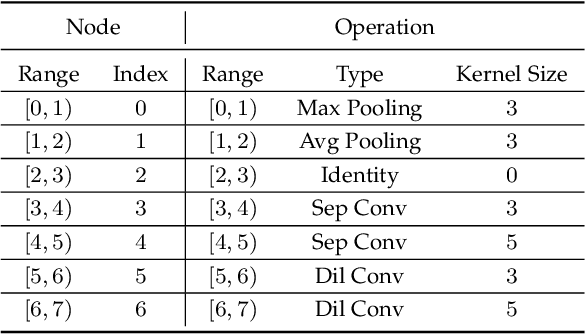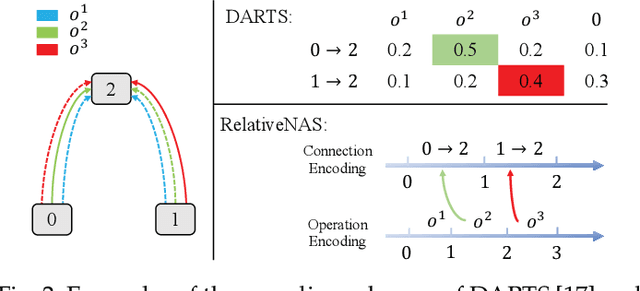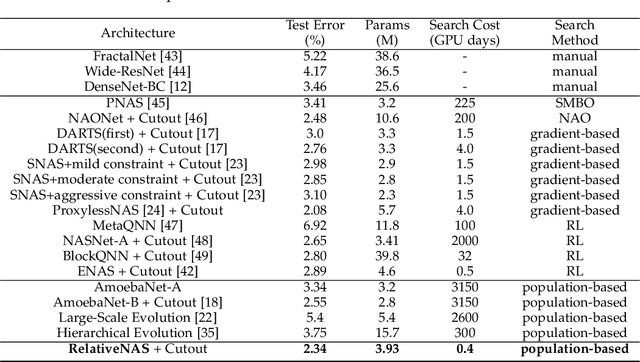RelativeNAS: Relative Neural Architecture Search via Slow-Fast Learning
Paper and Code
Sep 15, 2020



Despite the remarkable successes of Convolutional Neural Networks (CNNs) in computer vision, it is time-consuming and error-prone to manually design a CNN. Among various Neural Architecture Search (NAS) methods that are motivated to automate designs of high-performance CNNs, the differentiable NAS and population-based NAS are attracting increasing interests due to their unique characters. To benefit from the merits while overcoming the deficiencies of both, this work proposes a novel NAS method, RelativeNAS. As the key to efficient search, RelativeNAS performs joint learning between fast-learners (i.e. networks with relatively higher accuracy) and slow-learners in a pairwise manner. Moreover, since RelativeNAS only requires low-fidelity performance estimation to distinguish each pair of fast-learner and slow-learner, it saves certain computation costs for training the candidate architectures. The proposed RelativeNAS brings several unique advantages: (1) it achieves state-of-the-art performance on ImageNet with top-1 error rate of 24.88%, i.e. outperforming DARTS and AmoebaNet-B by 1.82% and 1.12% respectively; (2) it spends only nine hours with a single 1080Ti GPU to obtain the discovered cells, i.e. 3.75x and 7875x faster than DARTS and AmoebaNet respectively; (3) it provides that the discovered cells obtained on CIFAR-10 can be directly transferred to object detection, semantic segmentation, and keypoint detection, yielding competitive results of 73.1% mAP on PASCAL VOC, 78.7% mIoU on Cityscapes, and 68.5% AP on MSCOCO, respectively. The implementation of RelativeNAS is available at https://github.com/EMI-Group/RelativeNAS
 Add to Chrome
Add to Chrome Add to Firefox
Add to Firefox Add to Edge
Add to Edge